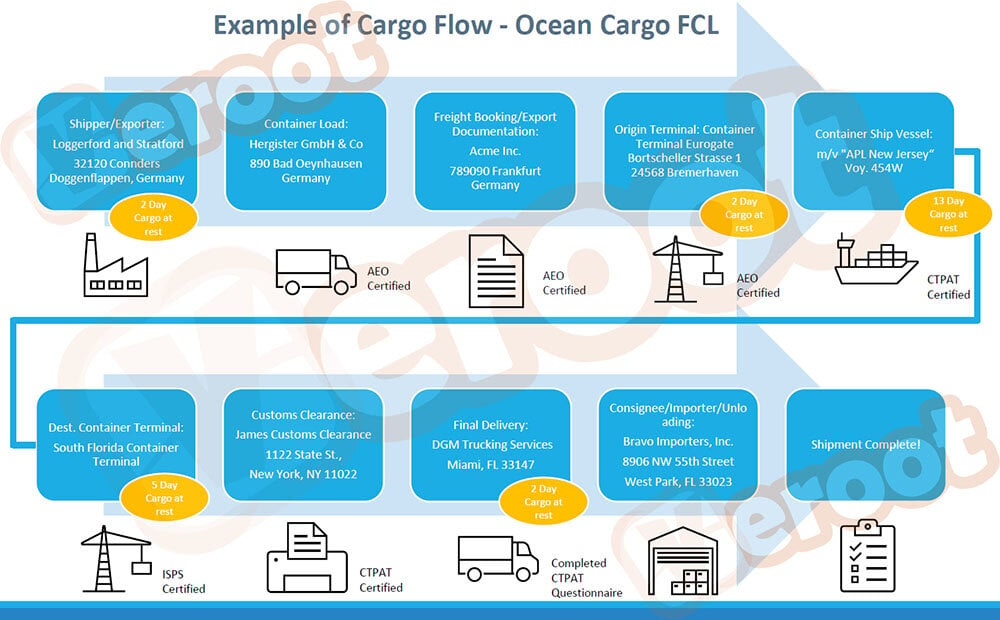3 min read
Unlocking the Mystery of CTPAT Tiers and Requirements
Ever wonder what a CTPAT Tier rating is and how you get it? In this article, we explain the difference between the CTPAT Tiers and how your company...

Developing a CTPAT Cargo Map is one of keys to completing your 5-Step Risk Assessment, and under new MSC requirements, your CBP inspector will likely require your organization to provide one in order to pass your annual renewal. However, many CTPAT members struggle to determine the best way to approach the Cargo Map component of the assessment and remain unsure what exactly their Supply Chain Security Specialist might be looking for during the evaluation. In this article, Veroot answers both those questions and walks you through the Cargo Map creation process, step-by-step.
A Cargo Map (also known as a Cargo Flow) is designed to show Customs and Border Protection that your company has command of every leg of the relationship between you, your suppliers, and your service partners. CBP wants to make sure you understand where your freight is located and the way it’s being handled at any given time.
When building a CTPAT Cargo Map, you can use a spreadsheet, a drawing, or even a written process document to communicate the required information. At Veroot, we prefer to demonstrate cargo flow in an infographic form (as shown in the image below) to help every stakeholder in the supply chain visualize the shipment.

The first step in creating your own Cargo Map is to choose a single shipment as a sample to complete the exercise. The shipment you select should have a journey that is representative of your typical supply chain flow (i.e. do not use an outlier shipment – pick something “typical”).
Next, follow that shipment’s journey through the supply chain to answer each of the following questions in detail. **We recommend creating long-form written responses for this part of the exercise.**
If your company outsources shipments versus handling them end-to-end, you may have to engage your logistics supplier to get the information required to complete an acceptable Cargo Map for CTPAT. That company will have all the necessary details stored in their Transportation Management System or ERP, and they should be able to provide it relatively easily by doing just a bit of research.
Finally, you must convert the data from your answers above into a step-by-step process format that will ultimately be submitted to your CTPAT Supply Chain Security Specialist at the time of your annual renewal.
We hope this guide helps you create a strong CTPAT Cargo Map that meets CPB expectations under new CTPAT MSC requirements. If you have further questions or need assistance with CTPAT...

3 min read
Ever wonder what a CTPAT Tier rating is and how you get it? In this article, we explain the difference between the CTPAT Tiers and how your company...

1 min read
Define Your Supply Chain Stakeholders. Every company has different reasons for joining CTPAT. Not all are obvious, but everyone involved in the...

In today’s global trade world, having a secure warehouse is not just about keeping your cargo/inventory safe, it’s a major part of staying Customs...